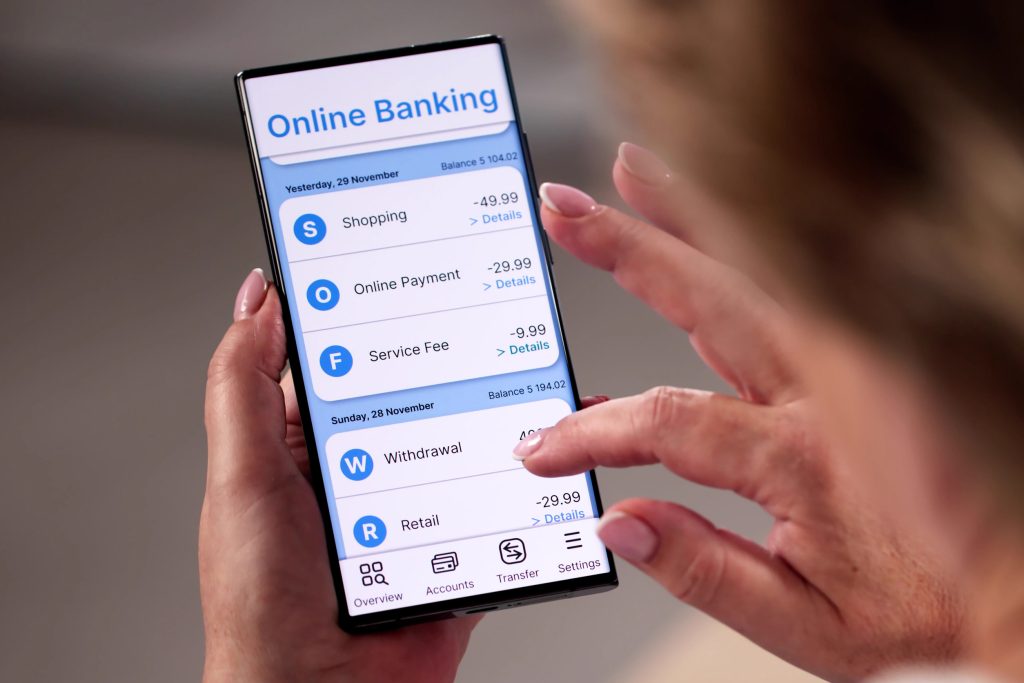
Digital banking offers unparalleled convenience. You can deposit checks, pay bills, and transfer money with just a few taps on your phone. For younger, tech-savvy generations, these tools are second nature. However, for many Baby Boomers who grew up with passbooks and tellers, the rapid shift to online platforms presents a unique set of challenges and hidden dangers.
While the benefits are clear, the risks are often downplayed, leaving older adults vulnerable. Understanding these hidden dangers of digital banking is crucial for Boomers and their families to navigate this new financial landscape safely. Here are some of the key risks to be aware of.
Increased Vulnerability to Sophisticated Scams
Scammers specifically target older adults, and digital banking gives them powerful new tools. Phishing emails and text messages designed to look like they are from a real bank are incredibly common. These messages create a sense of urgency, warning of a security breach or a frozen account, and trick the user into clicking a malicious link.
Once clicked, these links lead to fake websites that steal login credentials. Because some Boomers may be less familiar with the tell-tale signs of a scam, they are more likely to fall for these tactics. This can result in their accounts being drained in a matter of minutes.
The Challenge of Navigating Unfamiliar Technology
For someone who isn’t a digital native, banking apps and websites can be confusing and overwhelming. The user interfaces are often designed for younger users, with small fonts and complex navigation. This can lead to simple but costly mistakes, like transferring money to the wrong account or misinterpreting a balance.
Furthermore, the lack of face-to-face interaction removes a critical layer of support. When a Boomer had a question in the past, they could ask a trusted teller. Now, they are often directed to a chatbot or a confusing FAQ page, increasing their frustration and the likelihood of errors.
The Risk of Account Lockouts
Digital banking relies heavily on passwords, security questions, and two-factor authentication. Forgetting a password or losing a phone can result in being locked out of your own account. While these security measures are necessary, they can be a significant hurdle for some older adults, especially those with memory issues.
The process of regaining access can be complicated and stressful, often requiring multiple forms of identification and long phone calls with customer service. This can leave them without access to their funds when they need them most, which is one of the most frustrating hidden dangers of digital banking.
Exposure to Malware and Spyware
Using a computer or smartphone for banking exposes the user to the risk of malicious software. A simple act like clicking on a pop-up ad or downloading an attachment from an unknown sender can install malware on a device. This software can run silently in the background, recording keystrokes to capture passwords or even taking screenshots of banking information.
Many older adults may not have up-to-date antivirus software or may not be aware of safe browsing habits. This makes their devices prime targets for hackers looking to exploit these vulnerabilities and gain access to their financial accounts.
The Loss of a Personal Banking Relationship
For many Boomers, their local bank branch was a cornerstone of their community. They knew the tellers by name and trusted their advice. This personal relationship provided a sense of security and a valuable resource for financial guidance. Digital banking has largely eliminated this connection.
Without a trusted human to talk to, older adults may be more susceptible to making poor financial decisions or falling for scams. The algorithm that replaced the bank teller doesn’t understand their personal history or have their best interests at heart. This erosion of trust and personalization is a significant, though less obvious, danger.
Privacy Concerns and Data Breaches
When you conduct all your banking online, you are entrusting your most sensitive financial data to the bank’s digital infrastructure. While banks have robust security, data breaches are a constant threat. Hackers are always looking for ways to steal personal information on a massive scale.
For Boomers, who may be more concerned about privacy, the idea that their financial history is stored in the cloud can be unsettling. A data breach can expose their account numbers, transaction history, and personal information, making them targets for identity theft for years to come.
Balancing Convenience with Caution
The move toward digital banking is inevitable, and it does offer real benefits. However, we cannot ignore the hidden dangers of digital banking, especially for the Boomer generation. The solution is not to avoid technology but to approach it with education and support. Families can play a crucial role by helping their older relatives set up secure accounts, recognize scams, and navigate new apps. By acknowledging the risks and preparing for them, we can help Boomers enjoy the convenience of digital banking without compromising their financial safety.
How do you help older relatives with technology and online safety? Share your tips in the comments.
What to Read Next…
- 5 Online Banking Features That Make You a Target for Cyber Theft
- 8 Obscure Tricks Pickpockets Use in Crowds — And Why You Probably Wouldn’t Notice
- The Financial Time Bomb Boomers Are Leaving Their Children: The True Cost of Aging
- 7 Emotional Reasons Boomers Struggle To Downsize Even When Broke
- 9 Financial and Legal Burdens Adult Children Face When a Parent Enters Hospice
The post The Hidden Dangers of Digital Banking for Boomers appeared first on Budget and the Bees.







